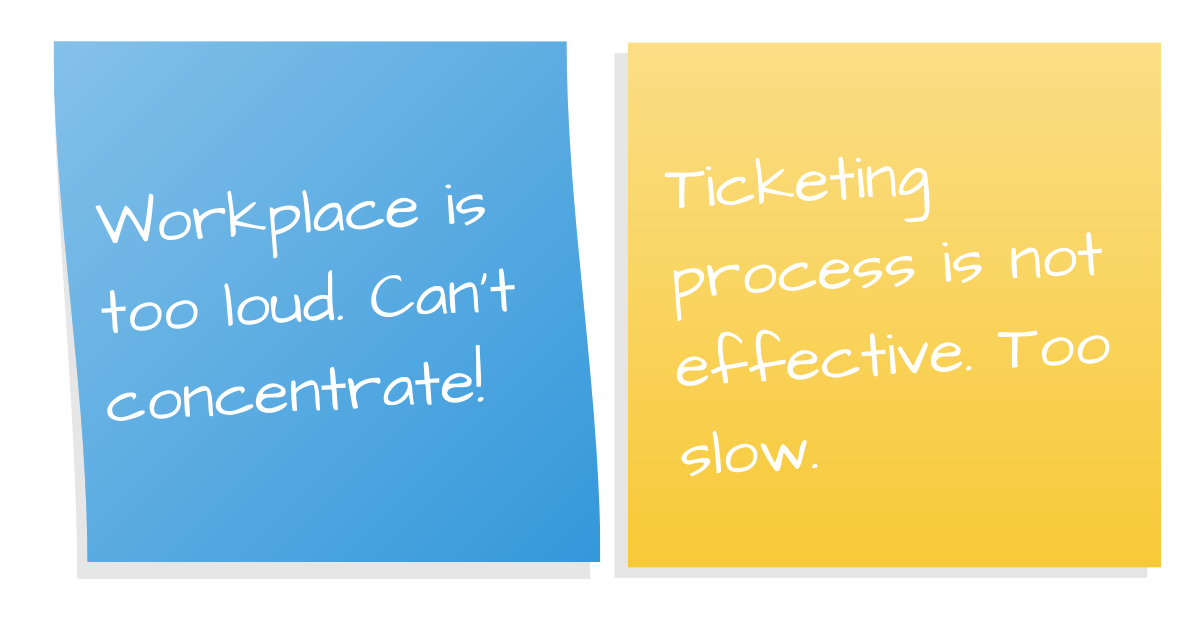Lightning Decision Jams: Solve Any Business Problem in an Hour
Are problem-solving and decision-making activities part of your daily work life? More often than not, the answer is “Yes!”. But have you had any official training in problem-solving? How do you make sure you do it effectively?
One thing is for certain: there are always going to be problems in the workplace. They happen all the time, and are opportunities to improve the organizational system. But we don’t usually feel comfortable dealing with conflict. The good news is, there are many techniques that can aid us into becoming conflict-friendly professionals through innovative problem-solving processes, like Lightning Decision Jams, which we will be covering today.
What Are Lightning Decision Jams or LDJs?
The guys over at AJ & Smart came up the term Lighting Decision Jam (LDJ), which is basically a super fast and effective process that solves any kind of internal problems within an organization through a mix of design thinking and design sprint methodologies. Defined by them in simpler words, it’s “a short exercise to solve internal team problems as fast as possible”. It takes between 40 to 60 minutes and always leaves the teams with precise, actionable results. The LDJ gives every participant involved an opportunity to share their thoughts, vote on issues, and offer viable solutions in a more efficient way than the traditional meeting.
What is Design Thinking?
Design thinking is an iterative process for creative problem solving with a human-centered core, emphasizing on practical solutions. In simpler words, it is a way to understand the end-user’s needs in depth before taking a solution-oriented and creative approach to fulfill those needs. The main benefit of focusing on the end customer is building better products, services, and internal processes.
What are Design Sprints?
A design sprint is a four-phase process or workshop that uses design thinking to prototype, and test digital product ideas quickly in a matter of days. This sprint will serve as a funnel that guides your business from many options towards the ideal digital product solution to develop, because it helps to assess the viability of a new product or feature, or find new ways to tackle the flaws of an already existing product. Design sprints came out of the work that Jake Knapp did at GV (formerly Google Ventures).
What are the Benefits of Implementing LDJs?
A quick LDJ session can promote stronger team alignment and help solve the organization’s most pressing issues, whether the people inside the organization already know what they are or not.
An LDJ cuts out unnecessary discussion replacing it with a rapid creation of solution ideas and voting for the best one. By using this approach, teams are able to speed up the time it usually takes to make decisions. Each team member is given the time to come up with ideas, so everyone’s opinion is heard, and the best idea is chosen based on a democratic vote. The rapid pace of the workshop forces everybody to learn from their mistakes quicker. Some outcomes are:
- Align your team on one specific topic
- Identify the most pressing problems
- Identify different solutions quickly
- Choose the best solution
- Determine actionable results
LDJs in 9 Easy Steps:
You too can explore the benefits of creative solutions without discussion, by trying it for yourself. Let’s have a look at the 9 simple steps of Lighting Decision Jams, that can be applied and adapted to any scenario: whatever your business, if you’re providing value to your customers, what you’re really doing is solving their problems.
What you’ll need:
- Rectangular post-its.
- Square post-its (2 different colors)
- Voting dots (2 different colours)
- Permanent markers
- Timer
- 60 minutes
*Not mandatory but useful: focus music playlist.
1. Brainstorm problems (7 minutes):
Every team member must sit at a table and, without discussing with one another, write down on a post-it every challenge, problem, annoyance, or concerns they have regarding the topic in hand. One issue per post it. Once the 7 minutes are up, each team member must have a pile of post-its in front of them.
2. Present problems (4 minutes per person):
The moderator selects one person at a time to quickly explain each of their problems, in no more than 4 minutes in total. The person must be standing up at a wall or whiteboard and stick every post-it to the surface. Nobody else in the team is allowed to speak.
3. Select problems to solve (6 minutes):
Each team member gets 2 voting dots which they must distribute among the challenges they consider the most important to solve. You can vote for your own post-its, and/or put up both voting dots on the same post-it. Again, no discussion, no talking. Once the 6 minutes are up, the moderator must take the voted problems and arrange the post-its in order of priority.
4. Reformat problems as challenges (6 minutes):
The moderator has to rewrite or rephrase each voted problem as a standardized challenge (“How Might We…”). This approach aids in creating solutions.
.png)
5. Produce solutions (7 minutes):
It’s time to start creating solutions for the top voted How Might Wes. If there are more than one top voted problems, start with the one far on the left. AGAIN: no discussion! Each team member will get 7 minutes to write as many possible ways to address the challenge or challenges. One solution per post-it. Quantity beats quality here. The biggest benefit of not allowing discussion precisely in this step, is that we insure a variety of solutions. Once the time is up, everybody must paste their post-its on the surface (wall, whiteboard, whatever) as fast as possible (Preferably under one-minute) There is no individual presenting of solutions as this creates a bias towards the best presenters.
.png)
6. Vote on solutions (10 minutes):
Now each team member gets six dots to vote on the solutions they think would best solve the How Might We’s. Because the members will need to read each post-it, a little more time is given for this voting process.
7. Prioritize solutions (30 seconds):
The moderator takes the voted solutions and arranges the post-its in order of priority. Ignore any post-it with less than two votes.
8. Decide executable solutions (10 minutes):
An effective way to decide which solutions to execute first, is by knowing how much effort is required to execute them through a very simple scale measuring effort and impact. Effort means how much struggle it will take as a team to implement the solution, and impact is the degree to which the team thinks it would actually solve the problem. The scale looks like this:
.png)
The moderator will now take each solution one by one and add them to the effort/impact scale, like this: he will take the top voted solution, hover it over the center of the Effort/Impact scale and ask the team “higher or lower for effort?” Once the effort has been determined, the moderator asks the same question for impact: “Higher or lower?” Usually some small discussions break out here, so the moderator has to be diligent in finding a consensus and stopping any conversations that go past 20 seconds. Once all post-its have been added to the scale, you’ll have something that looks like this:
.png)
Now you have a clear overview of what which high-impact solutions could be executed and tested quicker (the green sweet-spot on the top left), and which high-impact solutions will take more effort (top right). The moderator now has to mark all post-its in the sweet spot with a contrasting dot so they are clearly identified:
-1.png)
9. Turn executable solutions into actionable tasks (5 minutes):
The moderator now takes the solutions from the “Sweet Spot” off the Effort/Impact scale and asks the person who wrote the solution to give actionable steps in order to test the solution. The actionable tasks must be able to execute on a timeframe of 1 or 2 weeks max. For example:
Once all the solutions are written up, your team now has actionable tasks that can be committed to. As for the solutions that didn’t make it to the “Sweet Spot” can be turned into actionable post-its and added to a backlog for further experimentation if needed.
-1.png)
Conclusion
That easy, right? Within an hour, your team has been able to define important challenges, produce solutions and prioritize what to execute on. If you'd like to explore this subject further and reap the organizational benefits of Lighting Decision Jams, you can check out our downloadable Practical Guide to Lightning Decision Jams. This technique carries myriad ways to make your teams and company more efficient and productive. If you need help strategizing your LDJs, feel free to contact us here at iTexico.
Hand-Picked Related Reads For You
.png)
Building a User-Centered Mobile Experience
READ MORE

Mobile Product Design & Development Guide
READ MORE

How to Plan and Execute Your Mobile Strategy
READ MORE




Post Your Comment Here